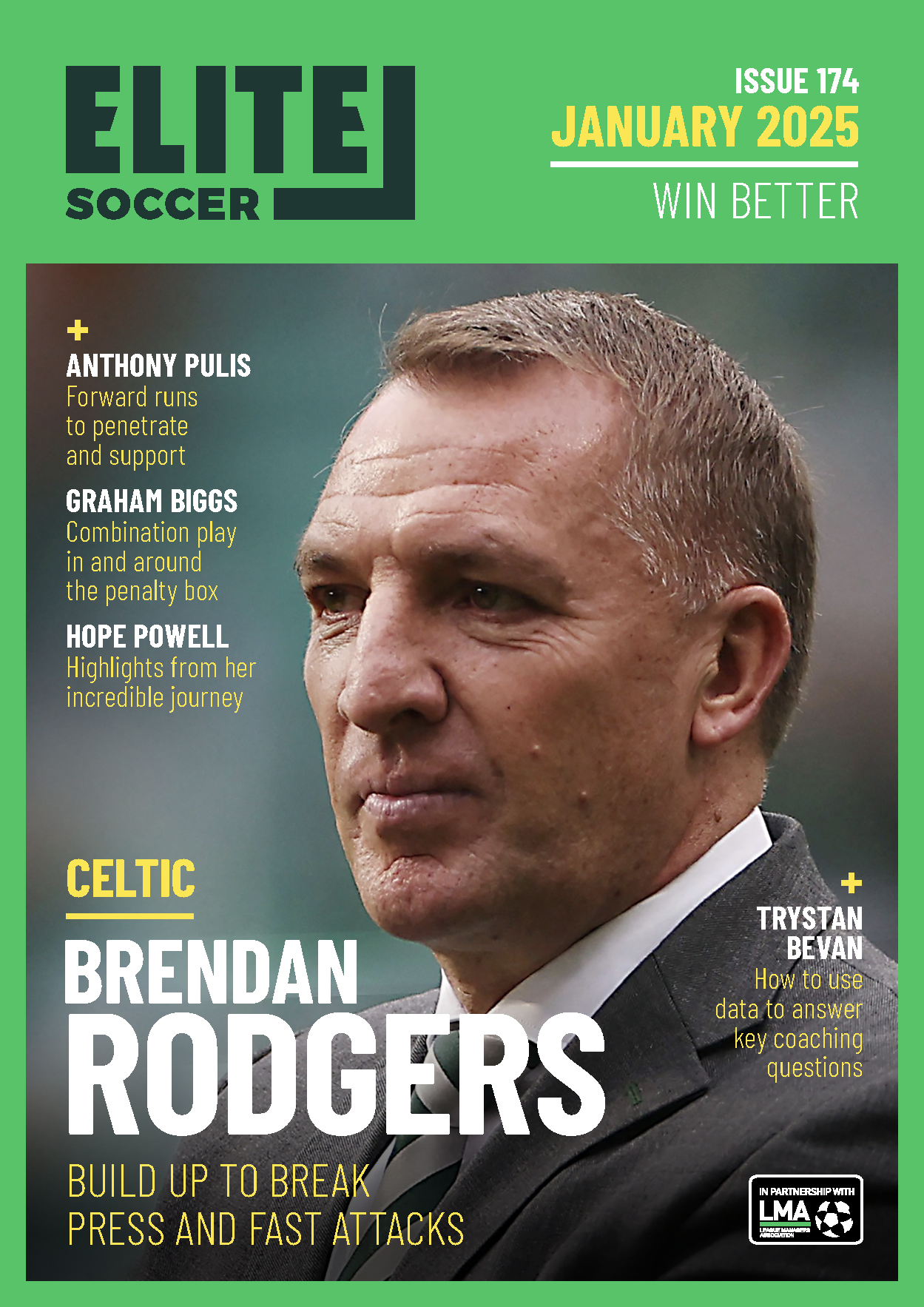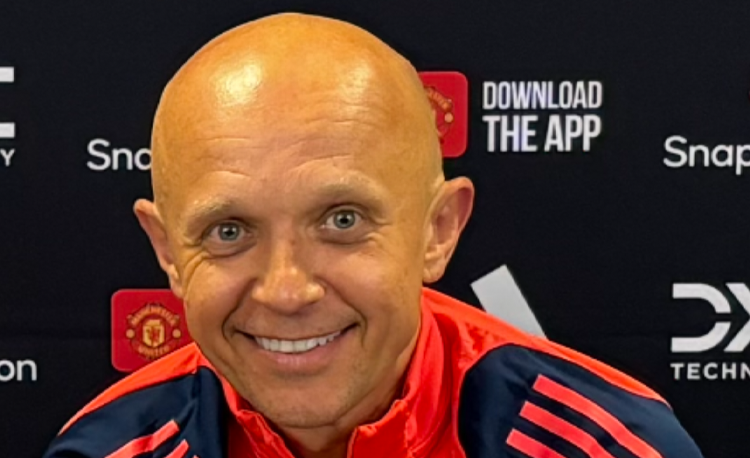You are viewing 1 of your 1 free articles
Deep runs from midfield
This session is designed to encourage attacking midfielders and wide players to make deep runs in behind the opposition defenders.
| Area | Up to two thirds of pitch |
| Equipment | Balls, bibs, cones, 6 mannequins, 3 small goals, 2 full size goals |
| No. of Players | Up to 15 players + 2 goalkeepers |
| Session Time |
Intensive midfield circuit: 5mins, Breakthrough play: 10mins, Breakthrough play progression: 10mins, Attack v defence: 20mins |
This session is designed to encourage attacking midfielders and wide players to make deep runs in behind the opposition defenders.
The biggest worry for defenders is the space behind them and unless we have runners penetrating these areas, we will not be able to disrupt the opposing team’s back line and create space in behind or in front of them.
This is a session that creates plenty of goal scoring opportunities and players tend to enjoy it as they take great pleasure from scoring goals and assisting.
I would tend to run the first couple of practices at least twice a week, to be included in the individual development programme of the midfield players. I always try to make these smaller sessions position specific.
What do I get the players to do?
Intensive midfield circuit
After a warm-up [not shown], we set up in an area of 24x24 yards with three small goals and three mannequins positioned as shown [1]. We’re using five players, who wait in line at the side of the area to take their turn to run through this midfield circuit. Two coaches set up the play – one is positioned at the top of the area and one is at the bottom.
1
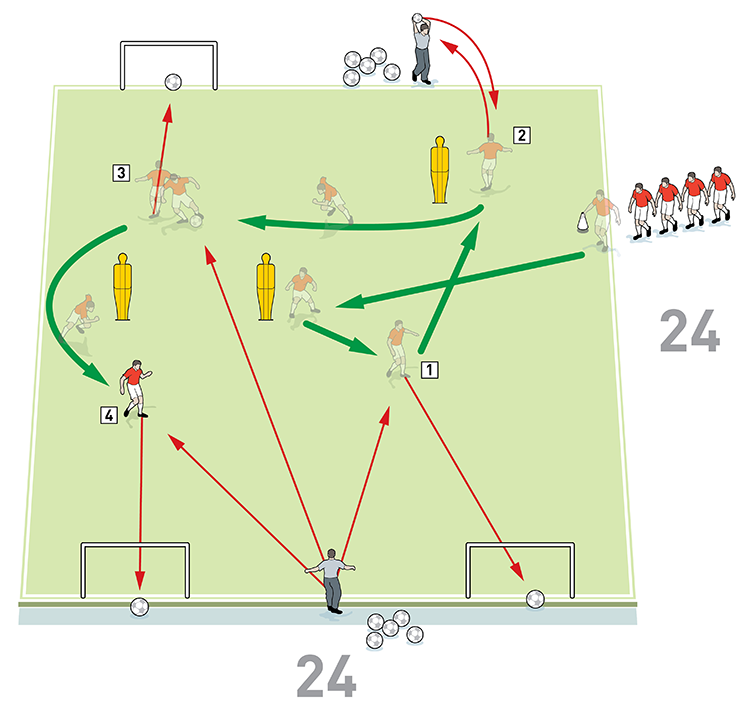
2. The player then presses the second mannequin and heads a ball thrown by the top coach
3. The player then accelerates across the area to intercept a ball played by the bottom coach and finishes quickly into the goal at the top
4. The run is completed with a short movement around the third mannequin and a one-touch finish into the final goal after receiving a ball from the bottom coach. Then the next player goes
The first player begins the sequence by making a run to press the central mannequin before receiving a ball played from the bottom coach and finishing in one of the mini goals at the bottom of the area. Following this, the player immediately runs to press the second mannequin where he heads a ball thrown by the top coach. He must then accelerate across the area to intercept a pass played by the bottom coach towards the top mini goal, finishing with a shot into this goal. The run is completed with a short movement around the third mannequin, where he receives a pass from the bottom coach and finishes with one touch into the other goal at the bottom of the area.
Then the next player starts the circuit. Each player completes five repetitions of the sequence.
What do I get the players to do next?
Breakthrough play
We set up on half a pitch with a full size goal and goalkeeper at one end and six mannequins positioned outside the penalty area, as shown [2]. We’re using five players: a defensive midfielder who starts in the centre circle, two attacking midfielders who start tight to the two central mannequins, and two wide midfielders – one on each wing.
2
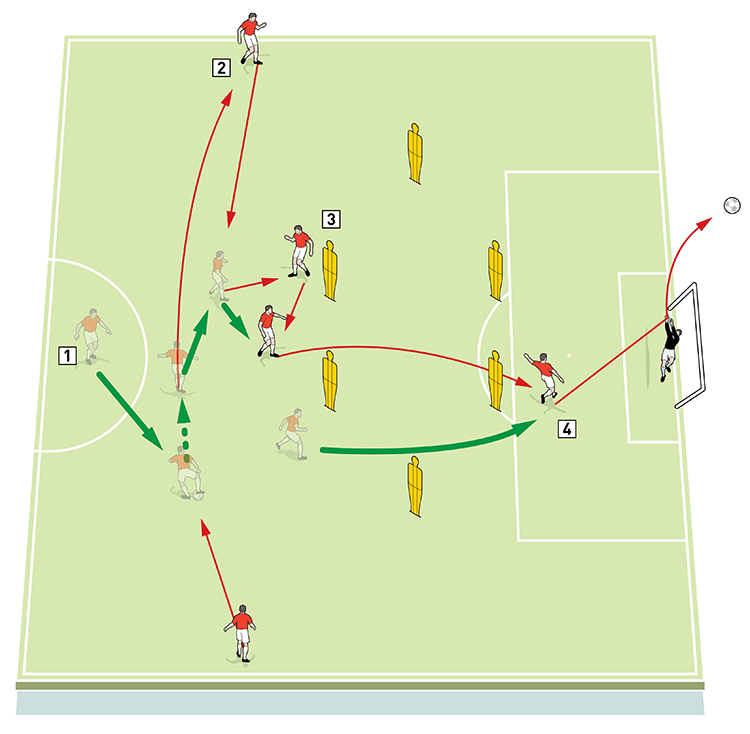
2. The wide player makes a return pass to the defensive midfielder, who moves to receive the ball
3. The defensive midfielder plays a one-two with the first attacking midfielder and then passes to the second attacking midfielder, who has made a run behind the mannequins
4. The second attacking midfielder runs on to the pass and finishes with a shot on goal
Play starts with the defensive midfielder moving to receive from the wide player and switching play to the opposite wide player. He then goes to collect a return pass before playing into one of the attacking midfielders, who can either set back to the defensive midfielder for a pass to an attacking midfielder who has made a deep run, or he combines with the other midfielder to attack behind the mannequins. The move should end with a shot on goal.
How do I progress the practice?
Breakthrough play progression
To advance the practice, we would add a centre forward to the attacking team and replace the mannequins with a live back four, making it a 6v4 in favour of the attackers, as shown [3].
3
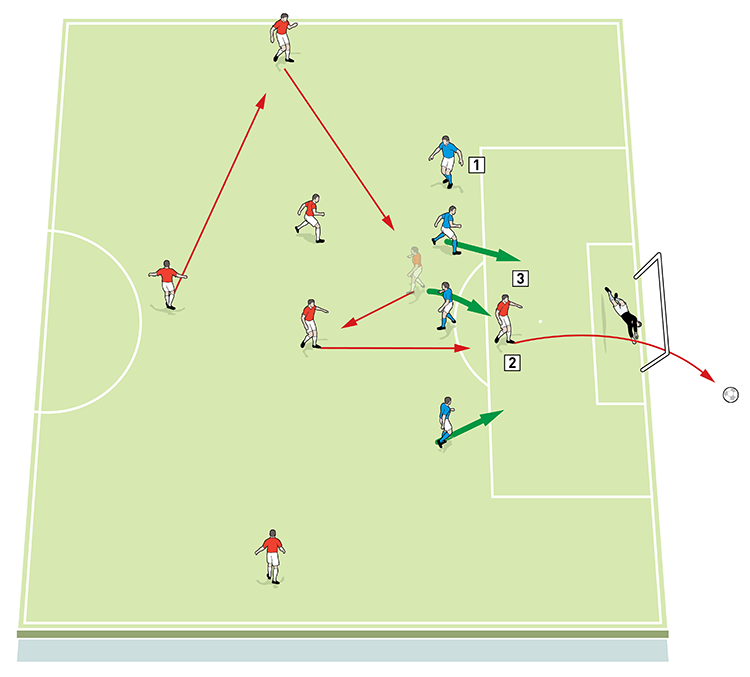
2. A centre forward is added to the attacking team, making it 6v4 in favour of the attackers
3. Players should make runs from deep to create scoring opportunities
We could use a linesman for offsides to make the practice more realistic. It is free play but the attackers are encouraged to make runs from deep and employ what they have learnt from the previous practice.
What do I get the players to do next?
Attack v defence
We set up on two thirds of a pitch with a goal and a goalkeeper at each end. We’re using 15 outfield players split into an attacking team of eight (the reds) and a defending team of seven (the blues). We’re also using a linesman to call offsides.
Play starts with a pass out from the red goalkeeper and goal scoring opportunities should be created using the attacking movements learnt in the session so far, as shown [4a]. The red front five should be encouraged to make forward runs in front of the ball to disrupt the defensive line – any of them can make a deep run in behind the back line to make space, not just the player that receives the ball.
4a
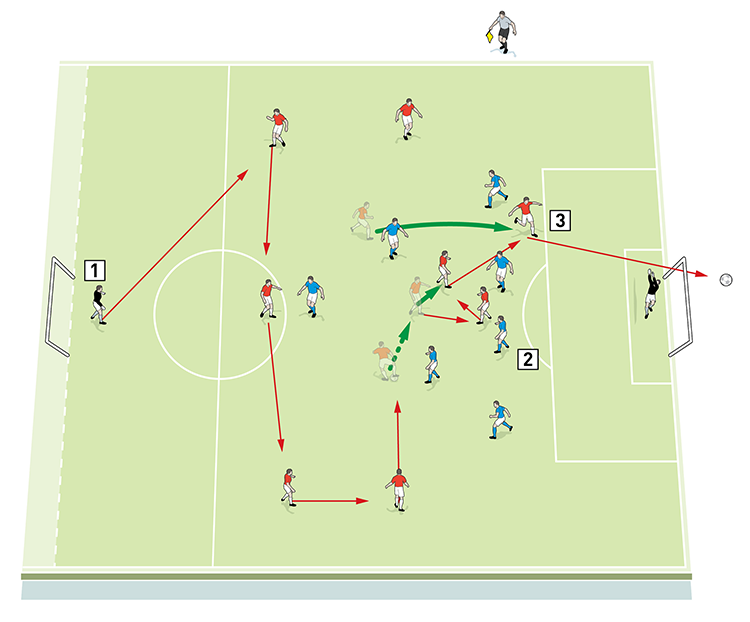
2. The blue defending team of seven attempt to stop the reds scoring
3. The red front five should make forward runs in front of the ball to disrupt the defensive line
To encourage transitions, if the blue team manages to intercept the ball or gain possession, they are allowed to attack and score, as shown [4b].
4b
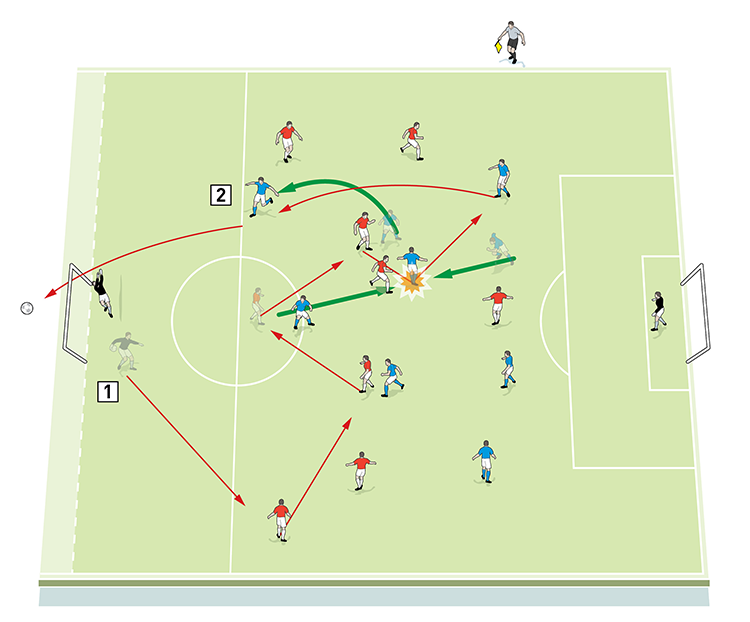
2. If the blues gain possession, they are allowed to attack and score
What are the key things to look out for?
The key thing we look for is the desire of players to make forward runs in front of the ball but on the opposite side of the ball. The players do not have to receive the ball, they are simply creating space either in front or behind the opposition’s back line.
What are the typical mistakes players might make and how do I avoid them?
Players have a tendency to play in front of the opposition too much and allow the back line to stay in shape with good organisation. We try to encourage attackers to make runs in behind.
Related Files
Editor's Picks
Using the goalkeeper in build-up play
Pressing principles
Intensive boxes drill with goals
Penetrating the final third
Creating and finishing
My philosophy
Pressing initiation
Compact team movement
Defensive organisation
Coaches' Testimonials

Alan Pardew

Arsène Wenger

Brendan Rodgers

Carlos Carvalhal

José Mourinho

Jürgen Klopp

Pep Guardiola

Roy Hodgson

Sir Alex Ferguson

Steven Gerrard
Coaches' Testimonials

Gerald Kearney, Downtown Las Vegas Soccer Club

Paul Butler, Florida, USA

Rick Shields, Springboro, USA

Tony Green, Pierrefonds Titans, Quebec, Canada
Join the world's leading coaches and managers and discover for yourself one of the best kept secrets in coaching. No other training tool on the planet is written or read by the calibre of names you’ll find in Elite Soccer.
In a recent survey 92% of subscribers said Elite Soccer makes them more confident, 89% said it makes them a more effective coach and 91% said it makes them more inspired.
Get Monthly Inspiration
All the latest techniques and approaches
Since 2010 Elite Soccer has given subscribers exclusive insight into the training ground practices of the world’s best coaches. Published in partnership with the League Managers Association we have unparalleled access to the leading lights in the English leagues, as well as a host of international managers.
Elite Soccer exclusively features sessions written by the coaches themselves. There are no observed sessions and no sessions “in the style of”, just first-hand advice delivered direct to you from the coach.



